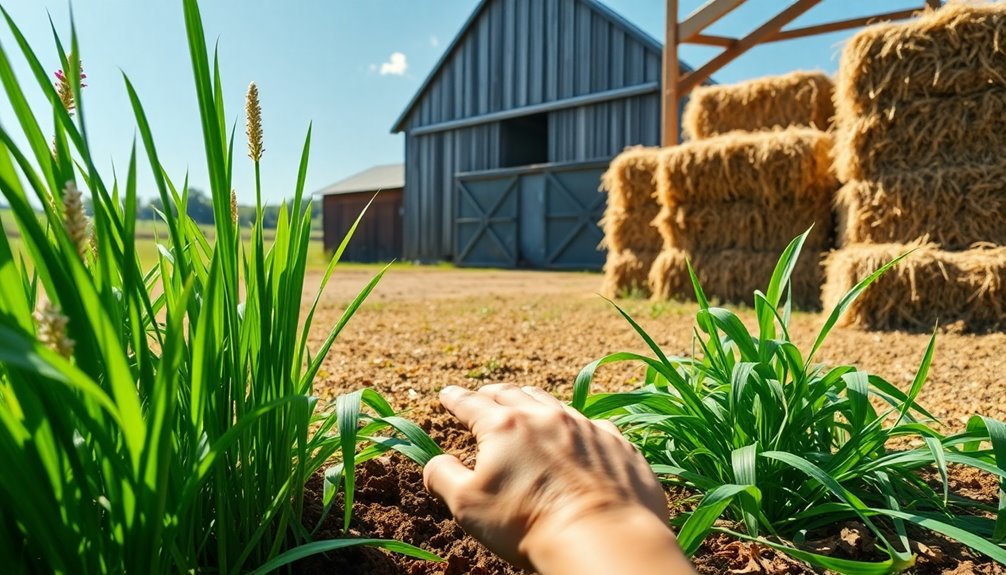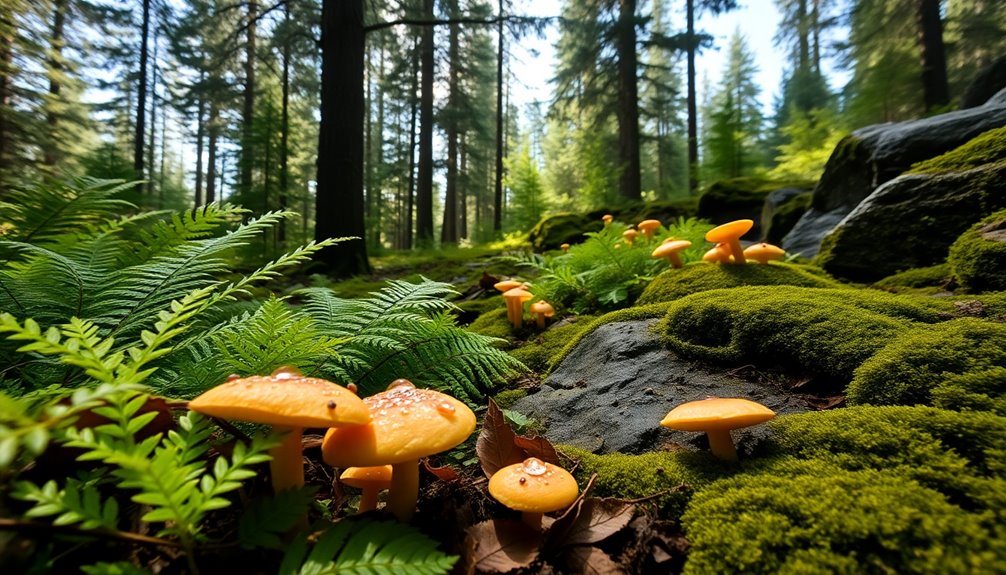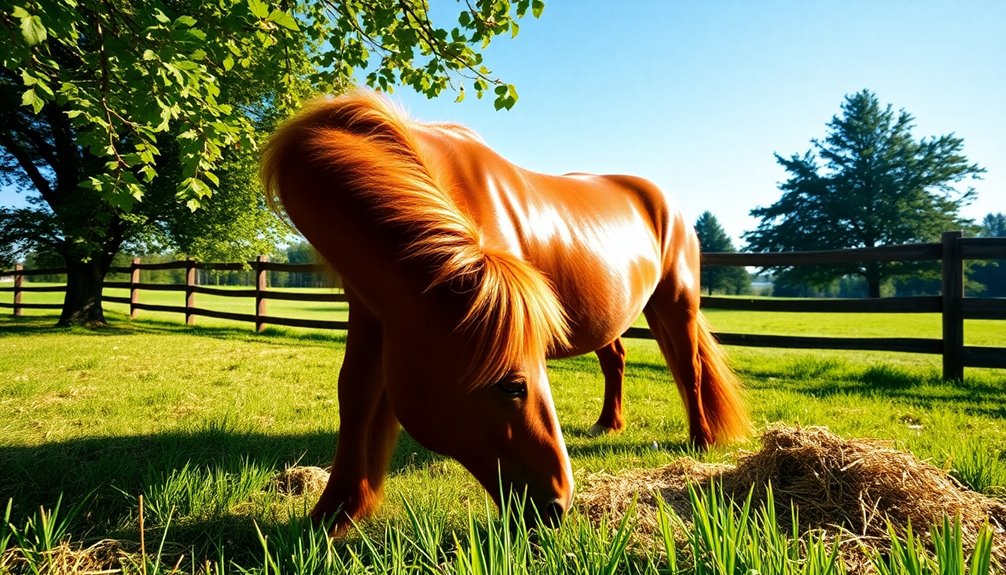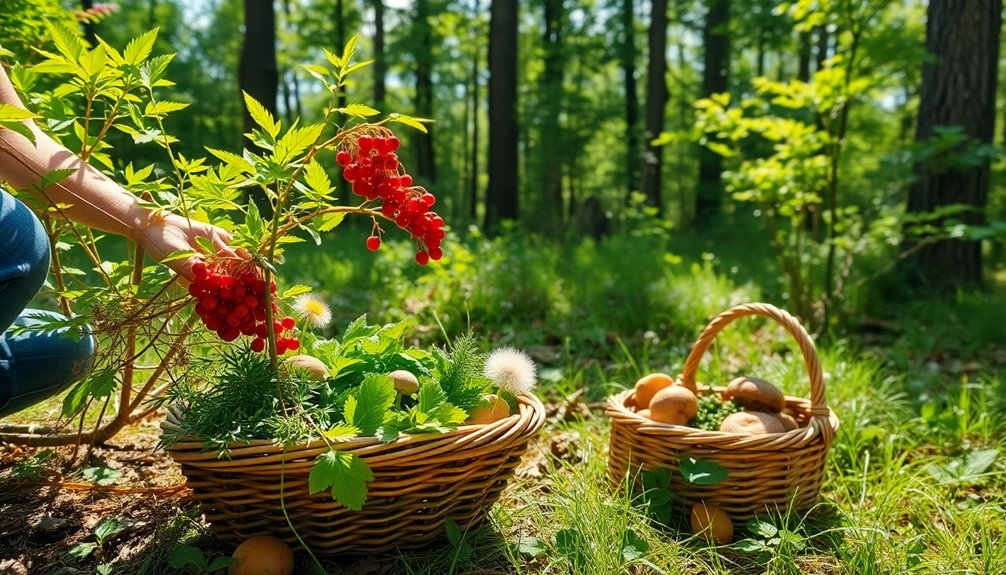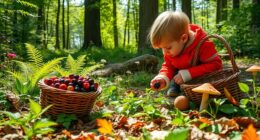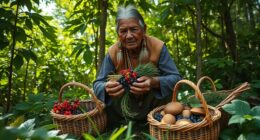Forage and fodder are both essential for livestock nutrition, but they differ in key ways. Forage refers to the parts of plants that animals graze directly, like leaves and stems. On the other hand, fodder is harvested forage, like hay and silage, that you provide to animals. Forage grows in the field, requiring more land and water, while fodder is typically grown in controlled environments. Nutritionally, both play crucial roles but serve different needs based on your farming situation. Interested in finding out how to choose the right option for your farm? There's more to explore!
Key Takeaways
- Forage refers to the vegetative parts of plants grazed directly by livestock, while fodder is harvested and delivered for feeding.
- Nutritional value differs; forage provides direct grazing nutrition, whereas fodder offers concentrated nutrition for confined animals.
- Forage requires more land and water, while fodder can be grown in smaller, drought-resistant spaces.
- Management techniques for forage include rotational grazing, while fodder needs careful storage to prevent spoilage.
- Farm size and livestock type influence the choice between forage for larger animals and fodder for smaller or confined animals.
Understanding Forage and Fodder
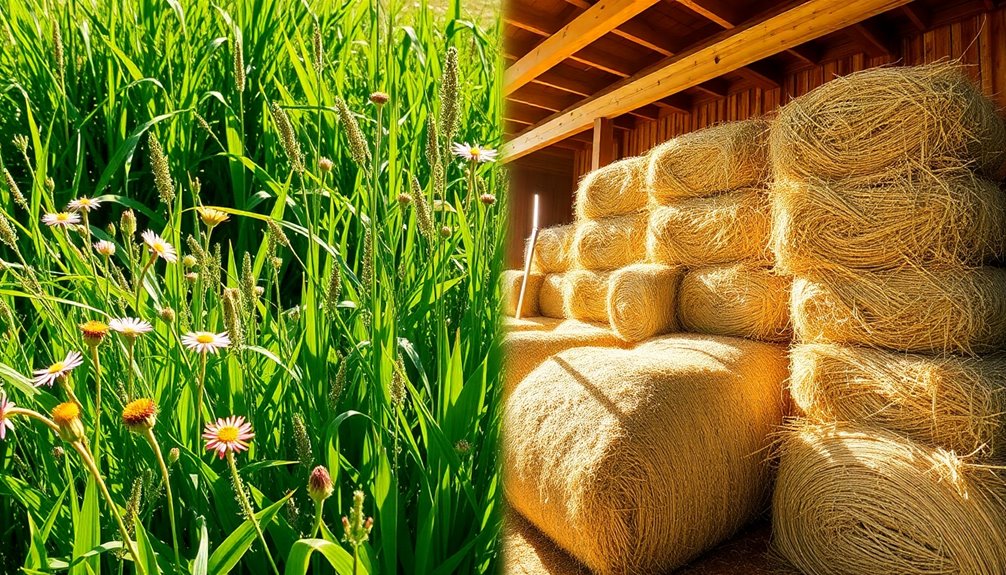
Understanding the differences between forage and fodder is vital for managing livestock nutrition effectively. Forage consists of the vegetative parts of plants—like leaves, stems, and flowers—that livestock graze directly in pastures. When you think of forage, imagine lush grasses, legumes, and herbs that provide fresh nutrition to your animals.
On the other hand, fodder refers to the harvested and delivered form of forage. This is particularly useful for animals in confined spaces where grazing isn't an option.
Common types of forage can be consumed fresh or preserved as hay, silage, or green chop. Hay is simply dried forage, while silage is fermented forage stored in airtight conditions. Green chop involves freshly cut forage that you feed immediately.
The nutritional value of both forage and fodder can vary greatly, depending on the plant type, growth stage, and management practices you employ. This variance considerably influences your livestock's health and productivity.
While forage plays a key role in extensive grazing systems, fodder offers a way to control feeding in confined operations, ensuring your livestock receive the right nutrients at all times.
Key Differences Between Forage and Fodder

When comparing forage and fodder, it's essential to grasp their distinct roles in livestock nutrition. Forage refers to the vegetative parts of plants, like leaves and stems, which livestock graze directly in pastures. In contrast, fodder is harvested and delivered feed, often stored as hay or silage for use in confined spaces.
Forage crops mainly consist of grasses and legumes, requiring more land and maintenance, while fodder crops include cereal grains like oats and corn, making them suitable for smaller or drought-prone areas. The nutritional value of forage can vary depending on the plant type and growth stage, whereas fodder is typically processed to provide concentrated nutrition in controlled environments.
Another key difference lies in how animals access their food. Forage allows for direct grazing, supporting extensive grazing systems, while fodder is designed for easier management of intake in stalls or pens.
Additionally, regular soil testing and maintenance practices are essential for the health of forage crops, while fodder crops require careful management to prevent mold during storage. Understanding these differences helps you make informed decisions for your livestock's diet.
Environmental Considerations for Crops
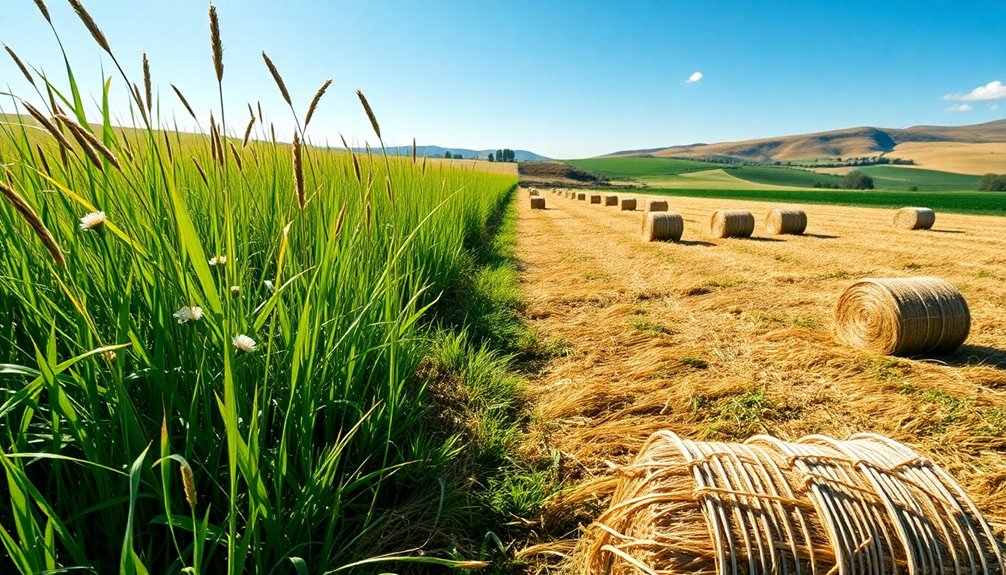
As you consider the environmental impact of crop choices, it's important to recognize how forage and fodder differ in their resource requirements. Understanding these differences helps you make informed decisions about which types of crops to cultivate.
| Crop Type | Land Requirements | Water Efficiency |
|---|---|---|
| Forage | Requires more land; ideal for large operations | Higher water needs; sensitive to drought conditions |
| Fodder | Can be grown in confined spaces like trays | Adaptable to low water availability; drought-resistant |
| Soil Health | Needs regular soil testing and pH management | Less intensive soil management required |
| Fertility | Relies on nitrogen and manure applications | Generally requires less external fertility input |
Forage crops often demand more land and maintenance, making them suitable for larger farms. In contrast, fodder crops thrive in arid environments, showcasing their adaptability to limited water. Additionally, they can be grown in smaller spaces, making them perfect for urban farming. By understanding these environmental considerations, you can better assess which types of crops align with your farming goals and local conditions, ensuring sustainable practices and ideal crop yield.
Crop Management Techniques

Effective crop management techniques are essential for optimizing the growth and health of both forage and fodder crops. Start by conducting regular soil testing to monitor pH levels, which helps you create the best conditions for plant health and growth.
Implementing rotational grazing practices can greatly enhance pasture health, allowing forage crops to recover between grazing periods while preventing overgrazing.
To maintain the quality of your stored fodder, use proper storage techniques. Airtight containers for silage and dry, ventilated areas for hay are critical to prevent spoilage and mold growth.
Regularly evaluating the quality of your forage is important, as the nutritional value can vary based on plant type and growth stage. This guarantees you meet your livestock's nutritional needs effectively.
Balancing the use of forage and fodder in one place helps you manage feed intake better. Doing so assures that your livestock receive adequate nutrition throughout various growth phases, supporting their overall health and productivity.
Choosing the Right Option for Your Farm
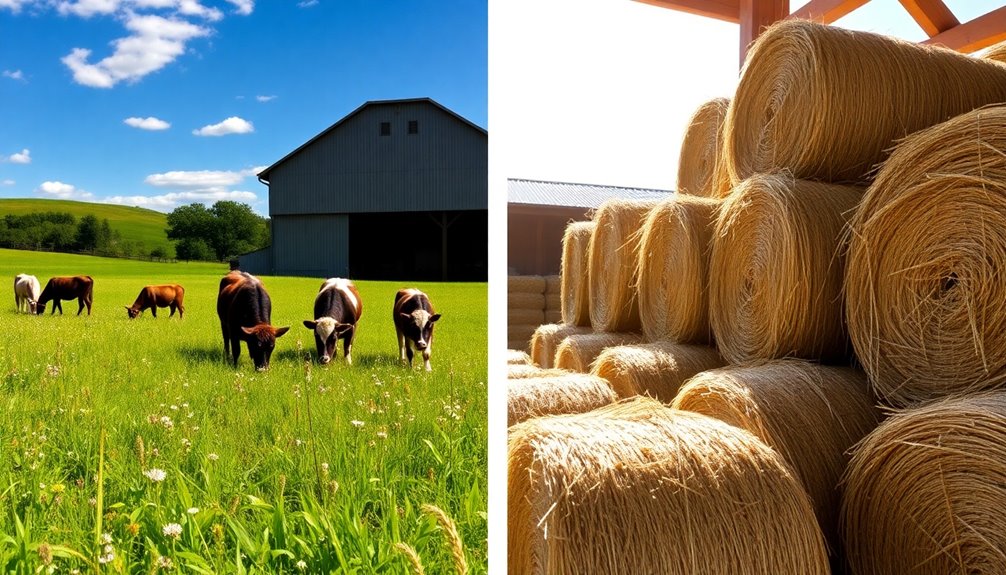
Choosing the right option for your farm often hinges on several key factors, including the size of your operation and the type of livestock you raise. For larger farms with extensive grazing systems, forage crops like alfalfa and hurricane grass are ideal. They provide nutritious grazing for livestock, particularly grazing animals like cows. Conversely, smaller farms may benefit more from fodder crops such as oats and corn, as these can be grown in limited space and allow for easier monitoring of animal food intake.
When making your choice, consider the environmental conditions of your farm, such as soil pH and water availability. Forage crops usually require more initial maintenance. Additionally, proper storage techniques for harvested fodder, like ensuring airtight conditions for silage, are essential for maintaining nutritional value.
Here's a quick comparison to help you decide:
| Aspect | Forage | Fodder |
|---|---|---|
| Farm Size | Larger farms | Smaller farms |
| Livestock Type | Grazing animals (cows) | Smaller animals (goats, poultry) |
| Maintenance | Higher initial maintenance | Easier to manage |
| Environmental Needs | More demanding | Less demanding |
Frequently Asked Questions
What Is the Difference Between Fodder and Forage?
The difference between fodder and forage lies in how they're used.
Forage consists of the fresh, green plants that your livestock graze directly in pastures. It promotes natural feeding behaviors.
On the other hand, fodder includes harvested and stored plants, like hay or silage, intended for feeding animals when they're confined.
Both have unique benefits, but understanding their distinctions helps you manage livestock nutrition and health effectively on your farm.
What Is the Difference Between Crops and Forages?
Picture a vibrant, green field swaying under the sun; that's where you'll find crops growing tall.
Crops are plants cultivated for food, fiber, or fuel, while forages are specific plants grown primarily for livestock feed.
You'll notice crops like corn or wheat, harvested and processed for human consumption.
In contrast, forages like grasses or legumes thrive in pastures, providing nutrition directly to grazing animals.
Understanding this distinction helps you optimize your farming practices.
What Is a Forage?
Forage is the part of plants, like leaves and stems, that you provide for livestock to graze on. It includes grasses, legumes, and herbs that can be eaten fresh or stored.
When your animals munch on fresh forage, they get essential nutrients while enjoying their natural grazing behavior. The nutritional value varies with the plant type and growth stage, impacting your livestock's health and productivity.
Forage is crucial for sustainable farming practices.
What Is the Difference Between Hay and Fodder?
Picture a sun-drenched field where golden hay bales sit, ready for winter, while vibrant green fodder bursts with life, waiting to be devoured.
The difference between hay and fodder lies in their moisture content and purpose. Hay's dry, stored for later, while fodder's fresh, often served immediately.
Hay's your long-term pantry, and fodder's your fresh salad. Both nourish your livestock, but they serve distinct roles in your feeding strategy.
Conclusion
In the world of farming, knowing the nuances between forage and fodder can make all the difference for your livestock and crops. While one may be a delightful buffet for grazing animals, the other serves as a carefully curated meal plan. By understanding these subtle distinctions, you can elevate your farming practices and guarantee your animals thrive. So, don't just go with the flow—choose wisely and watch your farm flourish!

